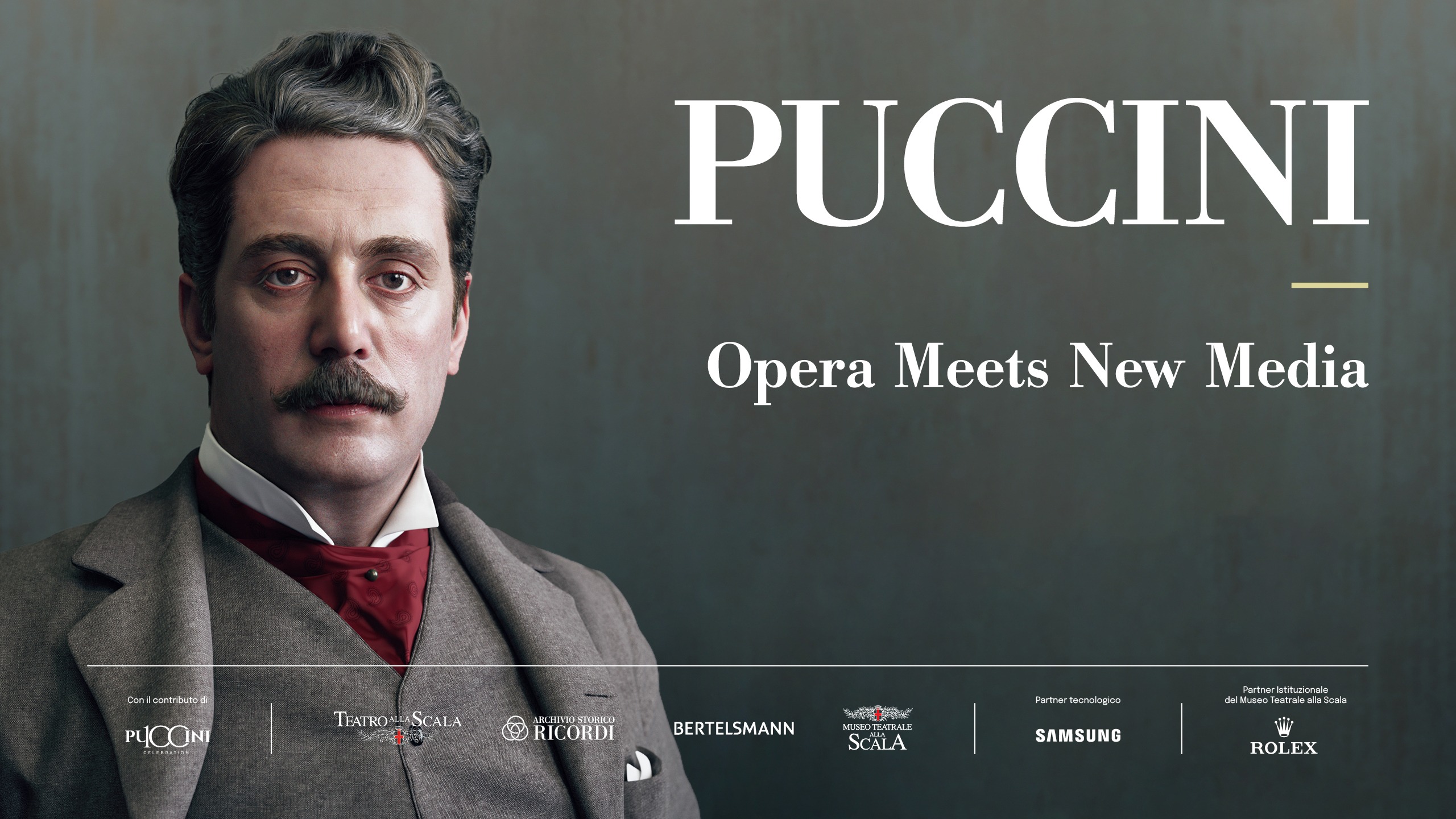Puccini - Opera Meets New Media
Puccini - Opera Meets New Media
24 october 2024 - 12 january 2025
Museo Teatrale alla Scala
Largo Ghiringhelli 1, Piazza Scala, Milano

On the occasion of the centenary of Giacomo Puccini's death, Bertelsmann and Archivio Storico Ricordi, with the support of the Italian Embassy in Berlin, previewed last April 18 Opera Meets New Media - Puccini, Ricordi and the Rise of the Modern Entertainment Industry, a multimedia exhibition on the composer and the interaction between opera and the media of the time that will land at the Scala's Theatrical Museum in Milan on October 24 and will be open until January 12 2025, under the title: PUCCINI Opera Meets New Media.
For more than a century, the operas of Giacomo Puccini (1858-1924) have been among the most performed in the world. The composer celebrated his greatest successes with La bohème, Tosca, Madame Butterfly, and Turandot at a time of tremendous technological innovation: in the early 20th century, the development of new entertainment media - the advent and spread of vinyl records and cinema - led to a true revolution in society and musical culture, radically challenging the traditional business model of music theaters.
The exhibition, curated by the scientific director of the Archivio Storico Ricordi, Gabriele Dotto, and musicologists Christy Thomas Adams and Ellen Lockhart, tells the story of the extraordinary symbiosis between commercial activity and artistic creation already practiced by Puccini and his publisher Ricordi in the last century. It traces the rapid rise of sound recordings and films as competitors to opera houses and the traditional business of music publishers. Other topics explain the new, modern and efficient marketing strategies developed by Casa Ricordi to market its opera repertoire, the “branding” of the publishing house's most successful composer and its expanding global business.
Thanks to the vast holdings of the Archivio Storico Ricordi, which traces Puccini's entire compositional activity through a rich documentation of the genesis of his works-letters, business documents, compositional records, publications, and many other contemporary accounts-the exhibition materials and installations describe the challenges of the new media of the time on copyright and exploitation of performance rights. Among the unpublished documents are sketches for the final duet of Turandot, which the Maestro had taken with him to Brussels, where he had gone in the hope of finding a cure for his illness. Far from offering a clear complete outline of what he had in mind for the opera's finale, they nevertheless represent a moving glimpse into the last expressions of Puccini's compositional process.